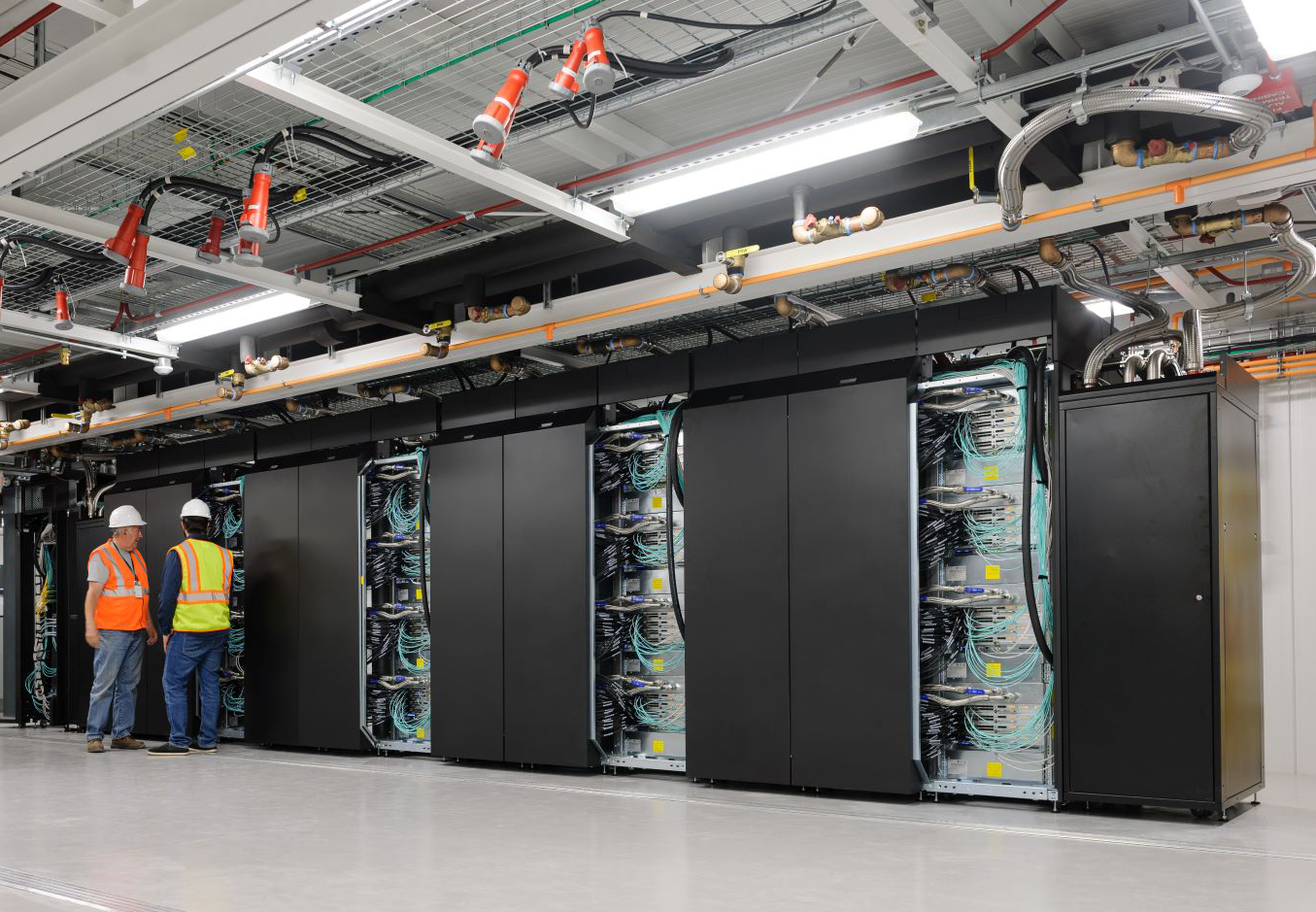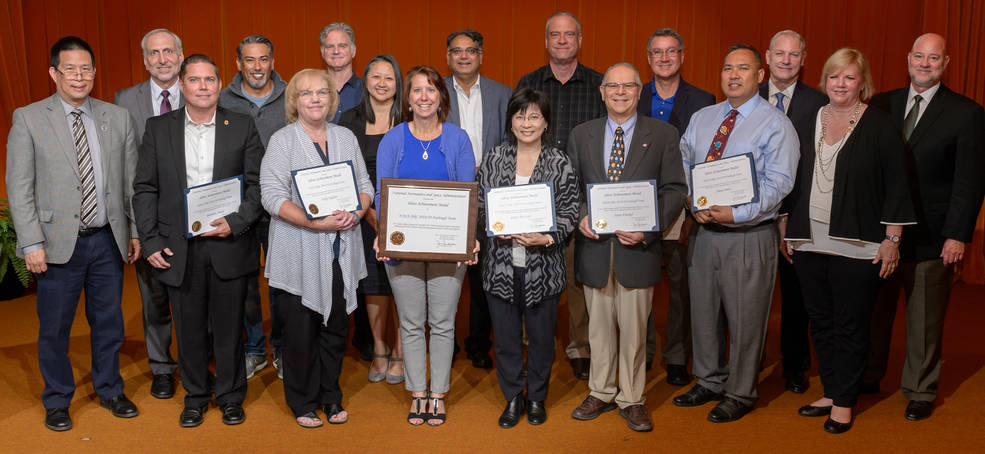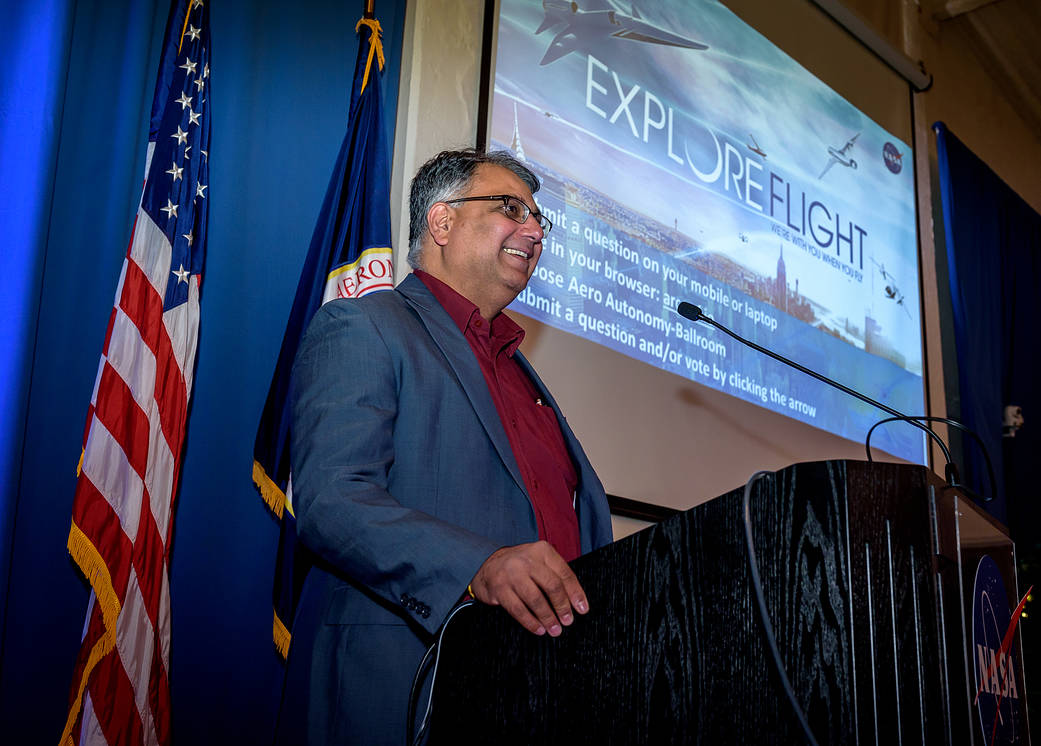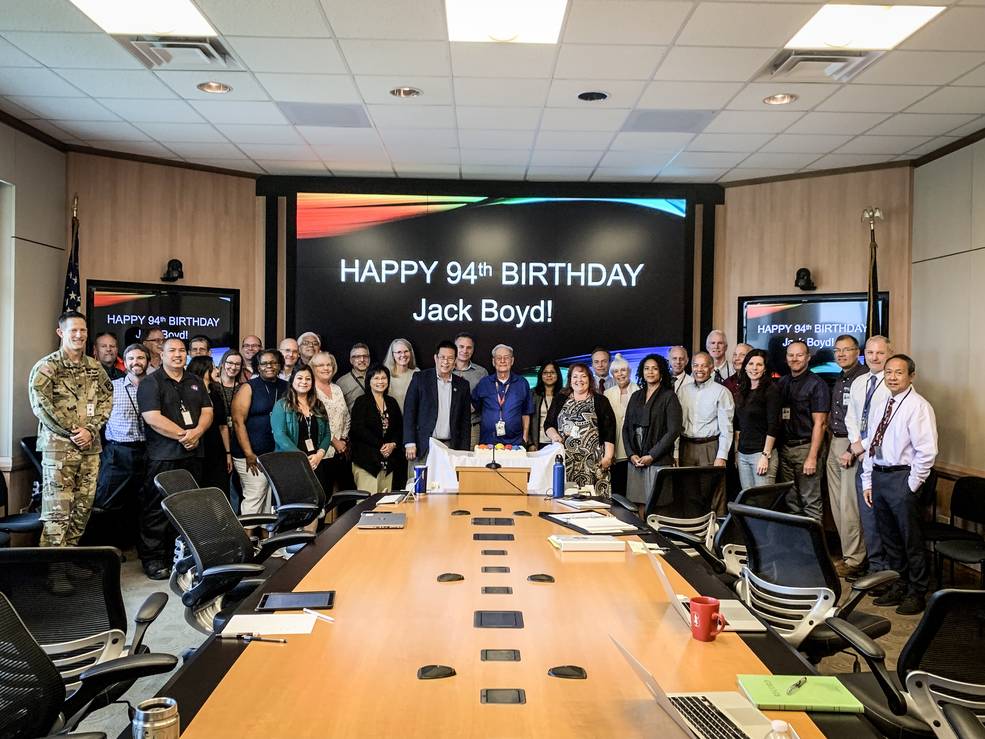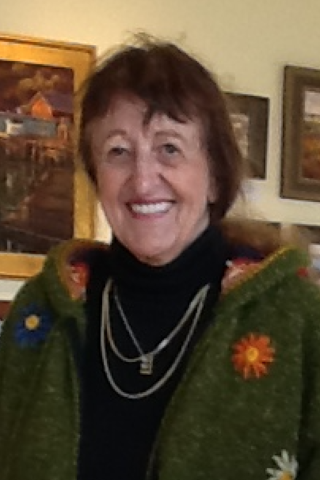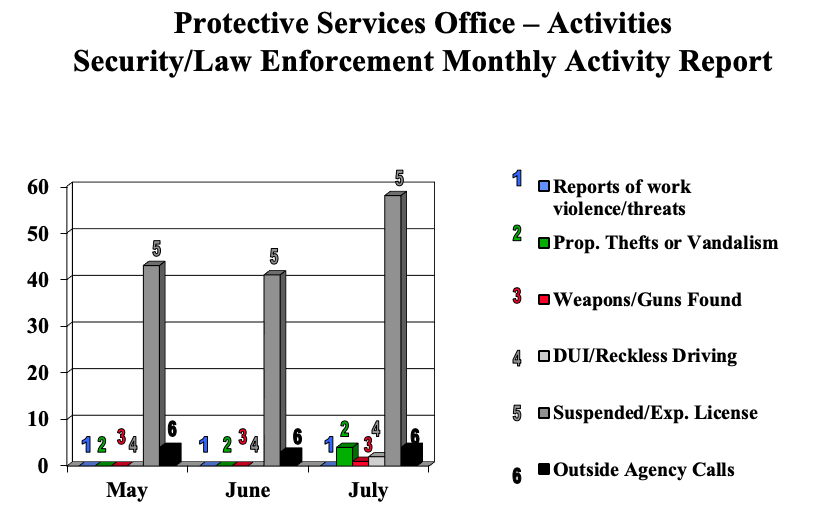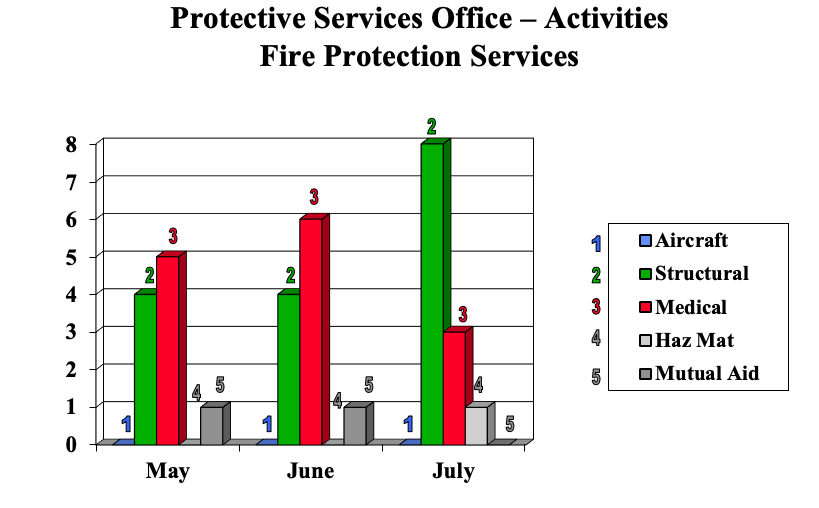Moon to Mars, New Ames Missions & Critical Quality Audit Discussed at All Hands
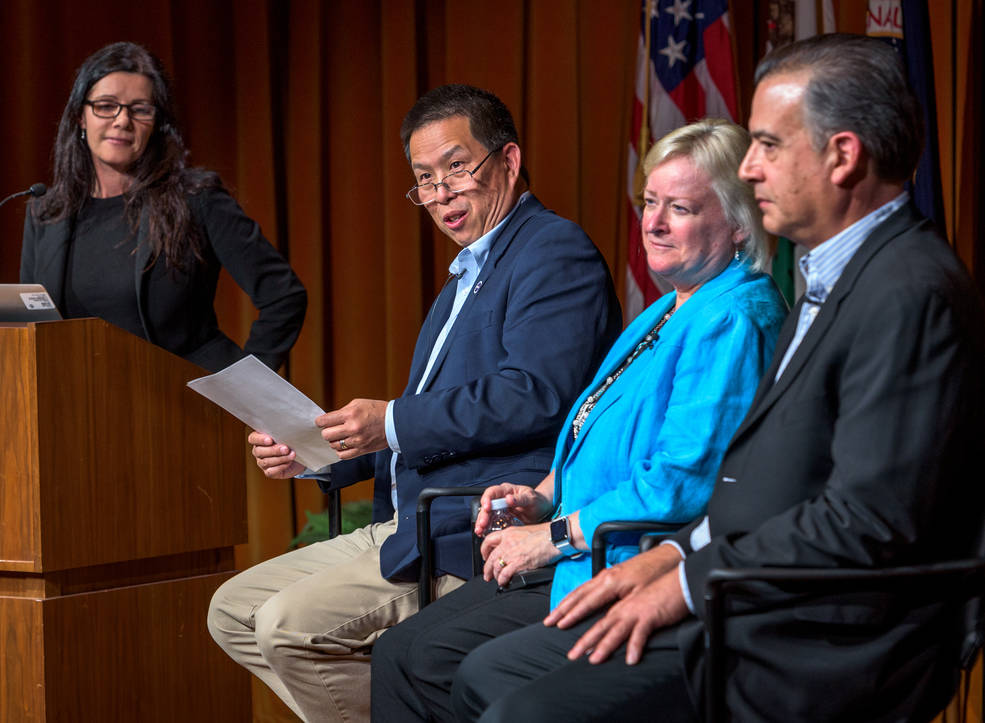
NASA’s Modular Supercomputing Facility Opens
NASA Ames opened the doors of its new Modular Supercomputing Facility. The facility is an innovative modular approach to supercomputing that expands the power of the NASA Advanced Supercomputing facility at Ames, used by more than 1,500 scientists and engineers across the country from NASA centers, industry and academia. The modular facility drastically reduces the amount of electricity and water typically needed to cool traditional supercomputing facilities. These savings are made possible by cooling technology that uses outside air and evaporative methods ideally suited to the temperate climate in the San Francisco Bay Area. In addition, a significant benefit of using the modular approach is the ability to quickly construct additional modules and add computing power to meet new challenges.
The new supercomputer, named Aitken, is housed in the first module of the facility, which has the potential to expand to 16 modules for computing and data storage. Aitken will give researchers the ability to run thousands of complex simulations more quickly as they continue to support agency missions and the Artemis program.
AA for Aeronautics Jaiwon Shin Presents Final All Hands at Ames
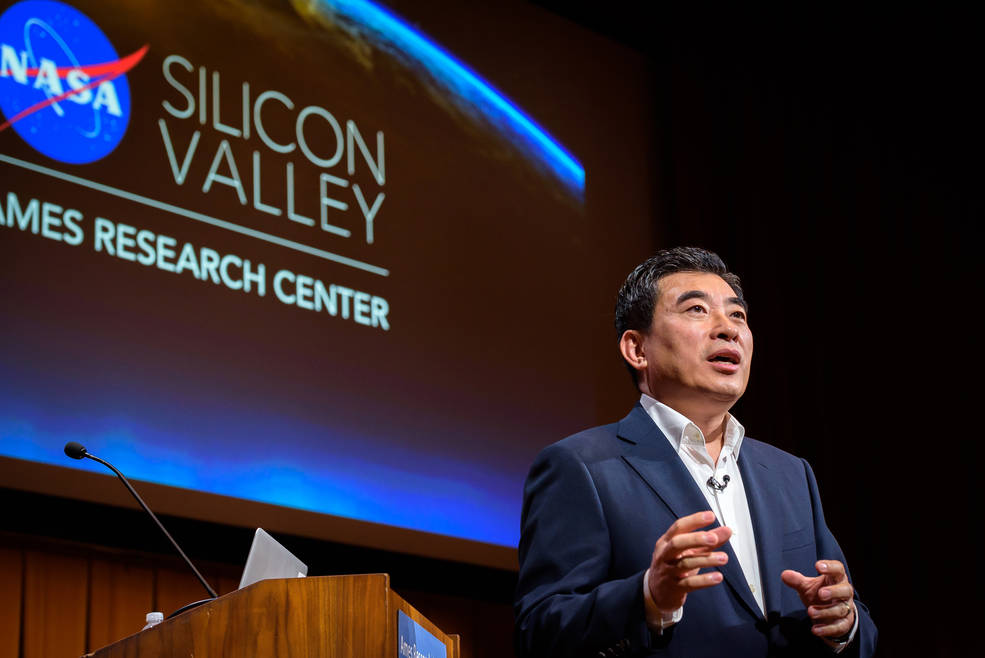
Ames Selected as the Winner of the 2019 NASA Software of the Year Award
Ames Research Center was selected as Winner for the 2019 NASA Software of the Year (SoY) award for our UAS Traffic Management Services (UTM) software. The Agency-wide annual SoY competition rewards high-quality, innovative, and robust software using efficient software engineering processes that meet NASA’s stringent safety and reliability standards. Sponsors of the competition include the NASA Chief Engineer, the NASA Chief Information Officer, and the NASA Office of Safety and Mission Assurance.
The UAS Traffic Management Services (UTM) software is a novel concept with the goal of enabling small UAS to access low-altitude airspace in a safe, efficient, and fair manner. The true innovation of UTM is the overall concept embodied within the system architecture. Traditional Air Traffic Management (ATM) relies on a central body (like the FAA) to manage and control the airspace. UTM allows for distributed management of the airspace wherein private companies collaborate to maintain a safe and accessible environment. The UTM Team includes: Joseph Rios, Irene Skupniewicz Smith, Priya Venkatesen, David Smith, Vijay Baskaran, Sherry Jurcak, Punam Verma, Daniel Mulfinger, Natalie Paremski, Parimal Kopardekar, Marcus Johnson, Jeff Homola, Jaewoo Jung, Tom Prevot, Ron Johnson, Joey Mercer, Arwa Aweiss, Leo Wang, and Lauren Claudatos.
A special thank-you to Ames’ Technology Transfer Office, Inventions and Contributions Board (ICB) members, and 2019 NASA SoY Selection Panel members who reviewed and selected the technology that Ames put forward for the Agency-wide competition. They helped assemble, vet, and submit the nomination package and also helped prepare the team for their final presentation delivered to the SoY Judging Panel. The Inventions and Contributions Board (ICB) members were Leland Stone (Code TH) and Mary Livingston (Code AA); Lee also serves as Chair of Ames’ SoY Selection Panel. The 2019 Ames SoY Selection Panel members were Kimberly Minafra (Code DI), Robert Duffy (Code TI), Robert Windhorst (Code AFH), Kim Chrestenson (Code DI), Katie Smyth (Code DI), and Hong Vong (Code DI); with support from Ames Chief Counsel office, Robert Padilla (Code DL) and Rhys Cheung (Code DL).
As a Center, we have enjoyed great success in previous NASA SoY competitions; and, this award adds to our proud legacy. Former Ames winners include:
- TSAS for Air Traffic Control (2017)
- Pegasus 5 CFD tool (with LaRC, 2016)
- NEQAIR v14.x Non-Equilibrium Radiative Transport and Spectra Program (with JSC, 2015)
- Configuration-Based Aerodynamics (CBAERO) (with MSFC, 2014)
- NASA App (with JPL, 2012)
- Kepler Science Operations Center (SOC) (2010)
- World Wind Java (2009)
- Data Parallel Line Relaxation Code (DPLR) (2007)
- Future Air Traffic Management Concepts Evaluation Tool (FACET) (2006)
- Cart3D (2002)
- Remote Agent (with JPL, 1999)
- Center TRACON Automation System (1998)
- Flow Analysis Software Toolkit (FAST) (1995)
- Incompressible Navier-Stokes Flow Solver in Three Dimensions (INS3D) (1994)
There will be a special awards ceremony for our UTM innovators as well as recipients of other 2019 technology-related awards here at Ames in early 2020.
NASA Centers Roadshow/All Hands Addresses Artemis Program Mission Progress
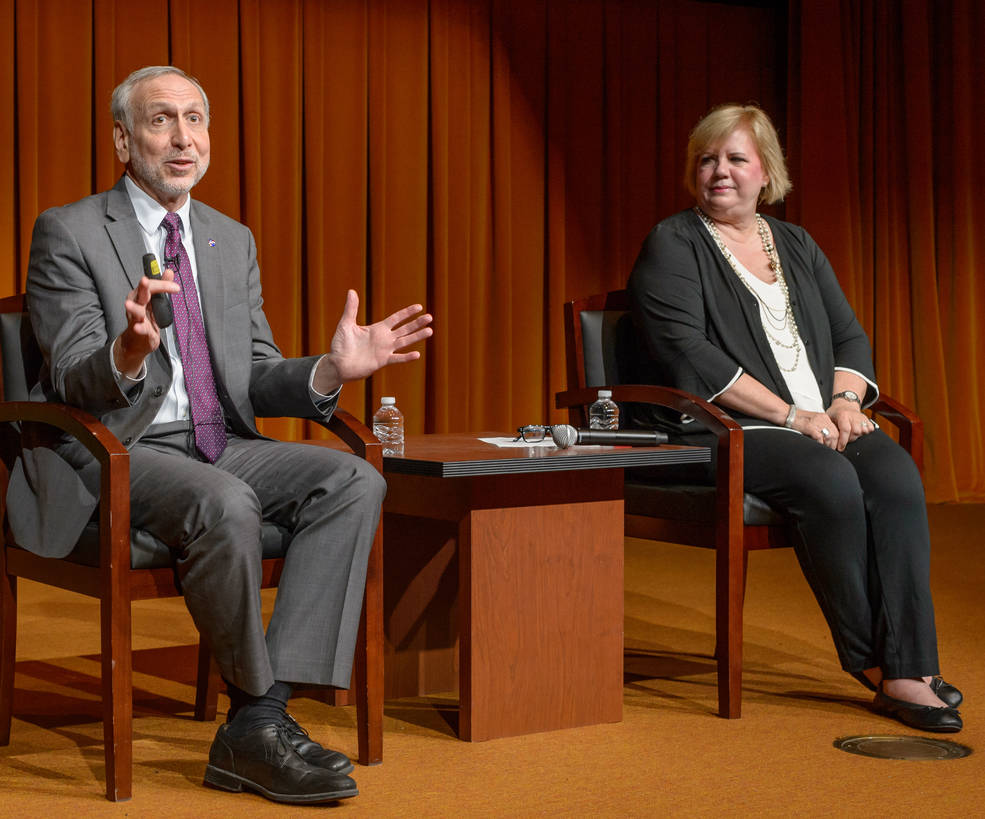
Working Together Towards Autonomous Flight
by Abigail Tabor
The next great leap in aviation is expected to bring us more and more autonomous flight. That means aircraft – from small drones to multi-passenger air taxis – equipped with whole suites of technology allowing them to fly independently. But such a revolution will not invent itself, so NASA is leading a series of workshops to support the development of a national strategy that will make increasingly autonomous operations possible in the U.S. airspace. This includes identifying the goals, opportunities and research priorities needed to help get us there.
The second event in the series organized by NASA’s Aeronautics Research Institute took place on Aug. 6-7, 2019, at NASA Ames. Pictured is Parimal Kopardekar, director of NARI, addressing the workshop participants on Aug. 7, 2019. NASA is taking the initiative to gather input from the full spectrum of players contributing to the development of autonomy in aviation. This includes aircraft manufacturers, operators of passenger, cargo or delivery services, venture capitalists, airport designers, machine learning specialists and more.
For more technical information on the second Enabling Autonomous Flight and Operations in the National Airspace System workshop, visit NARI’s website.
Employees Enjoy Good Food, Innovative Ideas and Multi-Cultural Exhibits
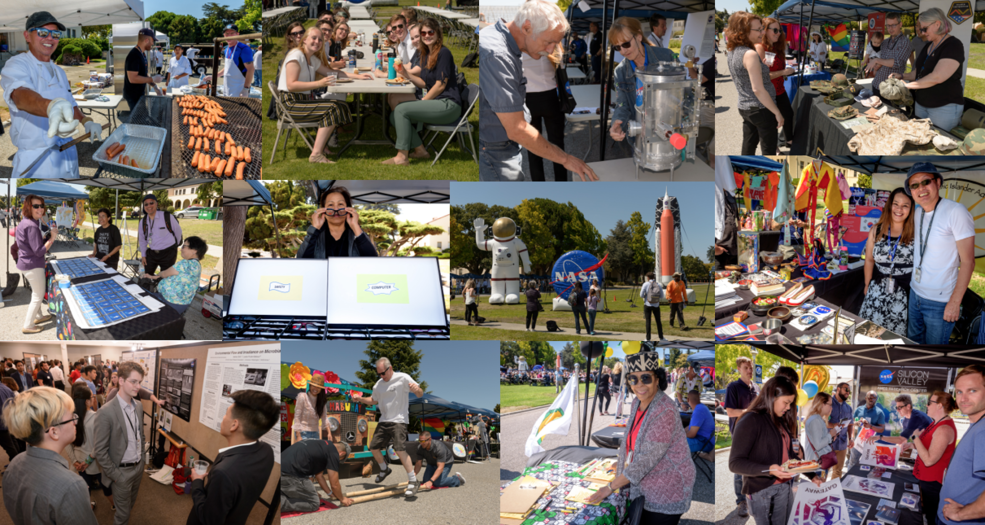
Aloha Festival Attendees Learn About Artemis, Infrared Technology and Moon Rocks
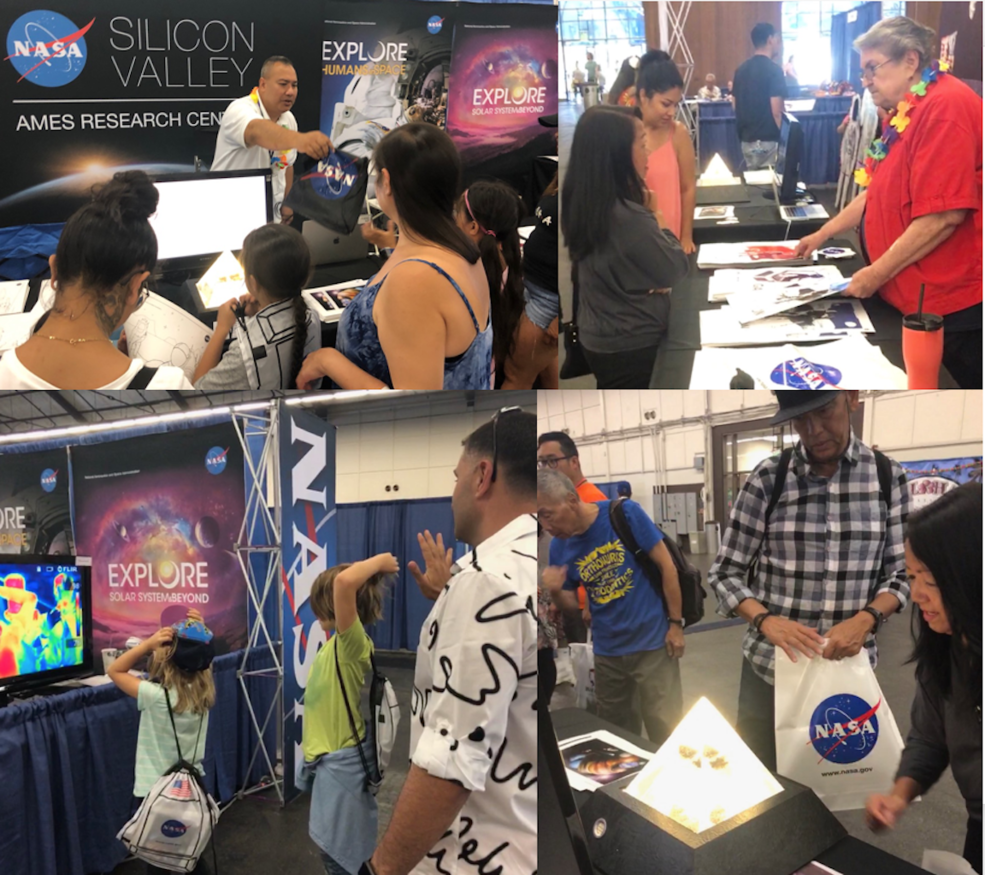
Ames Executive Board Celebrates an Ames Icon, Jack Boyd’s, 94th Birthday
Gentry Lee Presents, “A Passion for Exploration”
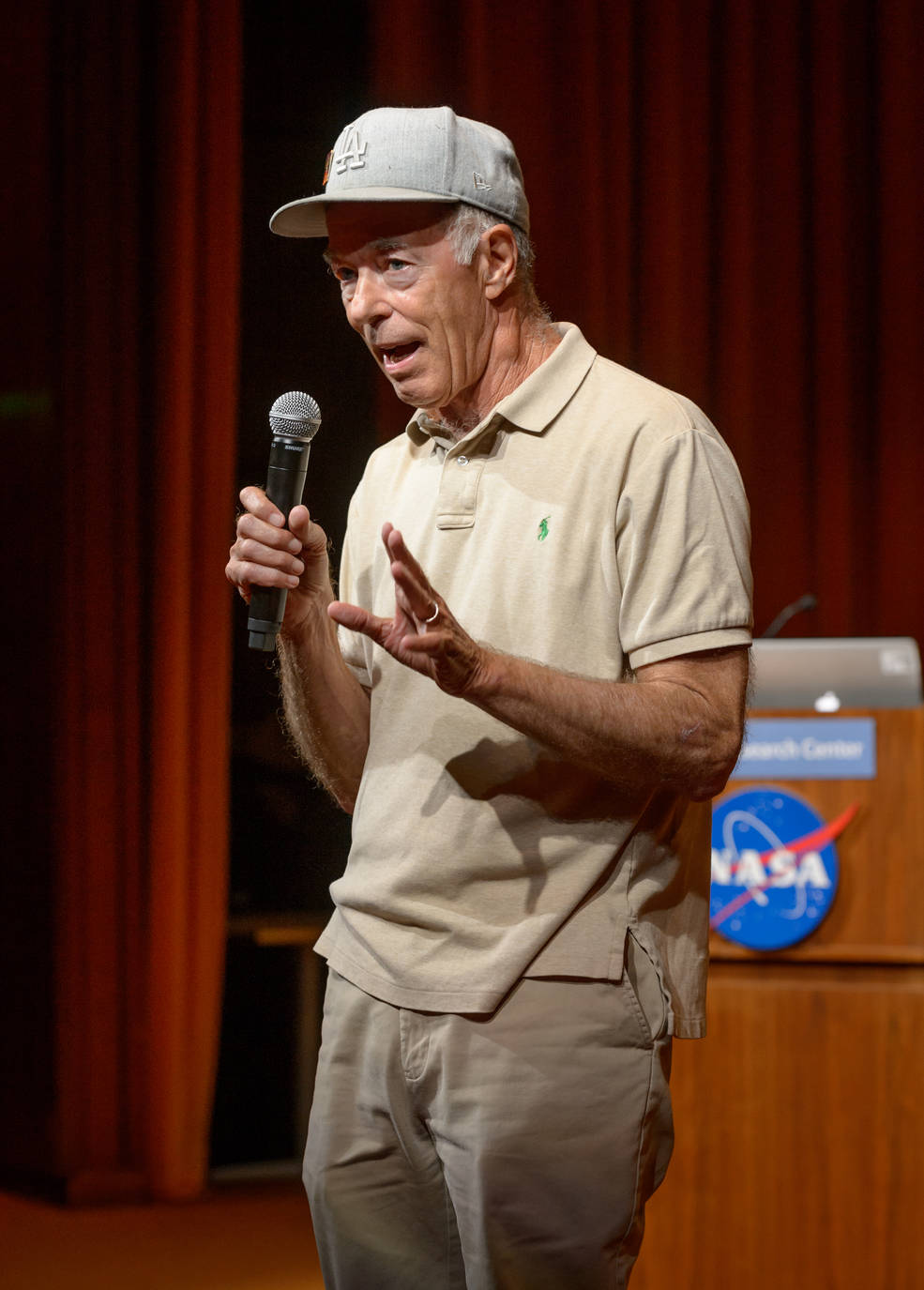
Ignotofsky Presents, “Inspiring Girls to Embrace STEM Through Illustration and Storytelling”

Johnson Discusses Exploring Our World and Cosmos Through Photography
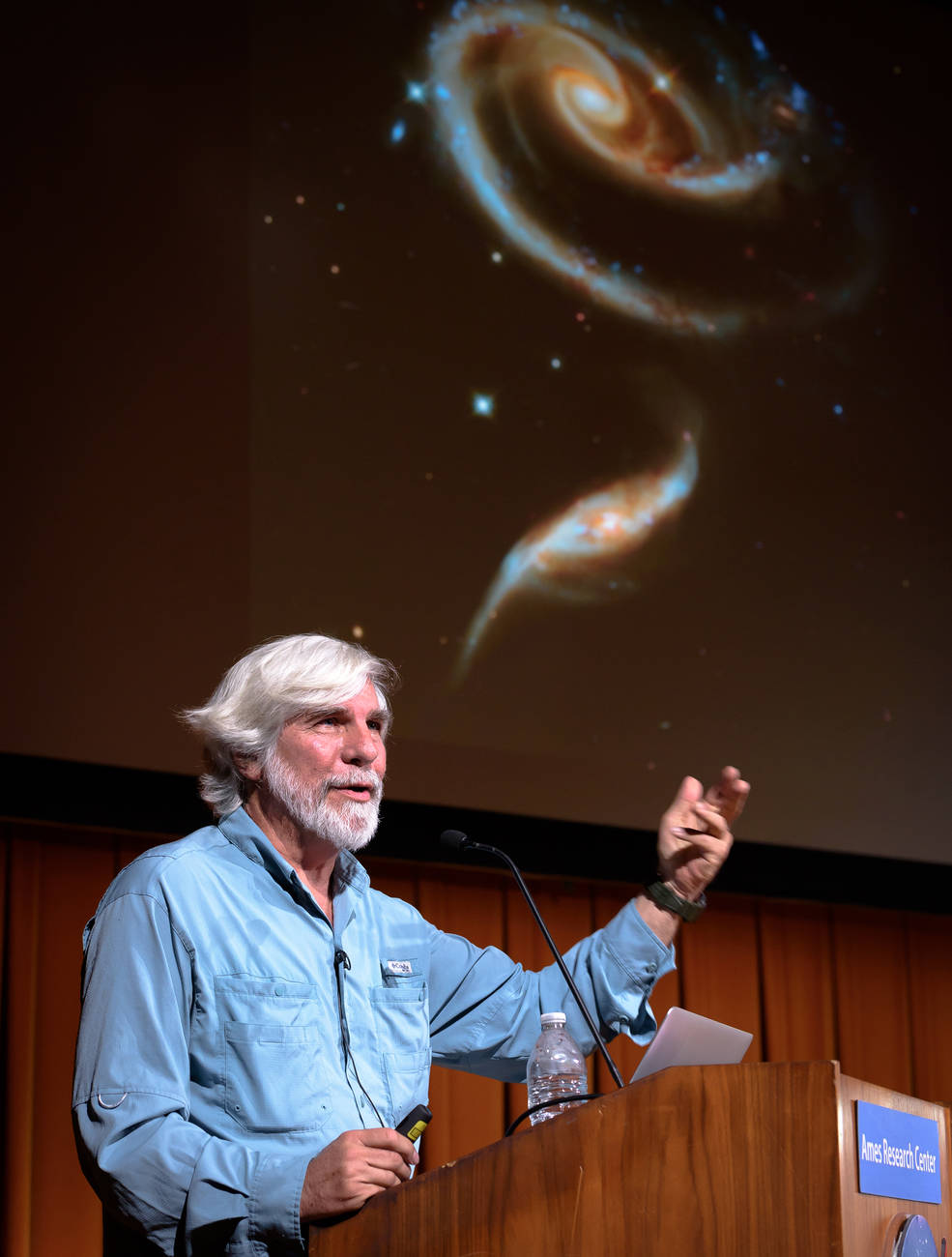
In Memoriam …
Former Ames Scientist and Financial Analyst Ester Bugna Passes Away
Longtime NASA Ames employee Ester Bugna passed away on May 6, 2019 following a brief illness. Born in Palo Alto in 1934, she lived as a child in the caretaker’s cottage at the former San Francisco Children’s Aid Auxiliary at the corner of Arbor Road and Middle Avenue in Menlo Park. After attending Notre Dame High School, she earned a degree in biological sciences with honors from Notre Dame de Namur University in Belmont.
A biologist by training, she began her career at Ames in 1963 working for Dr. Milton Heinrich in the Biological Adaptation Branch of the Exobiology Division. The location of that job was on Charleston Road, which was the location of all researchers who were finally settled on the third floor of the Life Sciences Research Laboratory (N239) when it was finished approximately a year later (1964).
Ester was part of the group examining the stability of various amino acids, recognized at the time as the “backbones of life,” in an effort to determine how we might eventually understand and sustain any life forms found during the Viking Mission to Mars. She co-authored several papers pertaining to that research with Heinrich, including “Determination of the Water-soluble Dinitrophenylamino Acids by Ion-exchange Chromatography” and “The Effect of Time of Heating on the Thermal Polymerization of L-lysine.”
In the mid 1970s, Ester transitioned from research to the position of financial analyst and staff assistant for the Life Sciences Directorate under Dr. Harold Klein, a position she held through numerous reorganizations until transferring in 1997 from the Space Research Directorate to the Gravitational Biology and Ecology Program Office under Dr. Mel Averner. She retired in 1999.
Her associates at Ames remember her as extremely capable and knowledgeable about Center systems and processes, yet friendly and willing to share her experience and knowledge. She was meticulous in her approach to assignments and prodigious in her work ethic and productivity. She mentored all who passed her way with a steady, kind hand and unselfishly shared her wisdom, providing assistance whenever she could.
She was a dedicated member of the Menlo Park Historical Association and Library Commission until her last days. On her passing, the Menlo Park Almanac commented “She loved gardens, cats, travel (especially road trips and travel of the ‘armchair variety’), art, theater, calligraphy, haiku and cooking shows.” Mendocino was one of her favorite places. Always proud of her heritage, she embraced the Italian term, “dolce far niente” — “How sweet it is to do nothing.” She was married for more than 30 years to Ted Sorenson, a former mayor of Menlo Park, who died in 2006. A celebration of her life was held on June 29, 2019, in Palo Alto. Memorial tributes may be directed to an organization of choice or to the Menlo Gates Project, c/o Menlo Park Historical Association, 800 Alma Street, Menlo Park, California, 94025-3445.




























